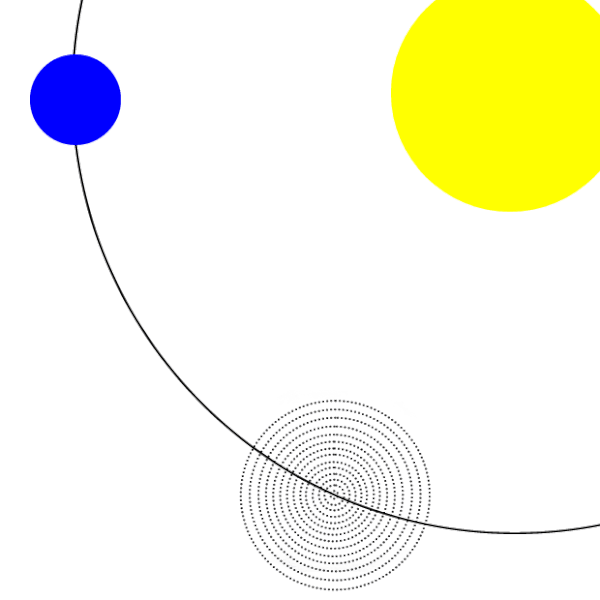
a name="Caption"> Caption: "Animation of Theia possibly forming in Earth's L5 point and then drifting into impact event with the earth. The animation progresses in one-year steps (before impact) making the Earth appear NOT to move. The view is of the South Pole." (Somewhat edited.)
Theia is the posited protoplanet whose impact causes the formation of the Moon in the giant impact hypothesis.
Features:
- The L4 and L5 points
are 2 of the
5 Lagrangian points where
a small body can be in a equilibrium position relative two much more massive mutually orbiting bodies.
- L4 and L5 points
are stable in that a small body put there will tend to stay there
(Wikipedia: Lagrangian point: Stability).
If one of the massive bodies is much smaller than the other,
the L4 and L5 points
lie nearly on the
orbit
of the smaller one about the larger one at leading and trailing positions
of ∼ 60° along the orbit with
these angles
subtended at the
Sun.
- The Trojan asteroids
of Jupiter orbit the
Sun nearly
on Jupiter's
orbit near
Jupiter's
L4 and L5 points
with the Sun.
The Trojans stay in these orbits quasi-perpetually.
- In the
Lagrangian point theory
of the origin of Theia,
Theia forms in either
one or the other of the
Earth's
L4 and L5 points
with the Sun.
Somehow gravitational perturbations destablize Theia and send it off to become the giant impactor of the giant impact hypothesis of the origin of the Moon.
- Although we don't know yet exactly when the
giant impact occurred, in the
Lagrangian point theory
the giant impact was
circa 4.5 Gyr ago or only of order 0.1 Gyr after the
solar system formation
when large protoplanets were common.
- In Greek mythology,
Theia (whose name means goddess) is the
Titan
goddess who
was the mother of the Moon goddess
Selene.
Image link: Wikipedia: File:Big Splash V1.0.gif.
Local file: local link: moon_theia.html.
File: Moon formation file: moon_theia.html.